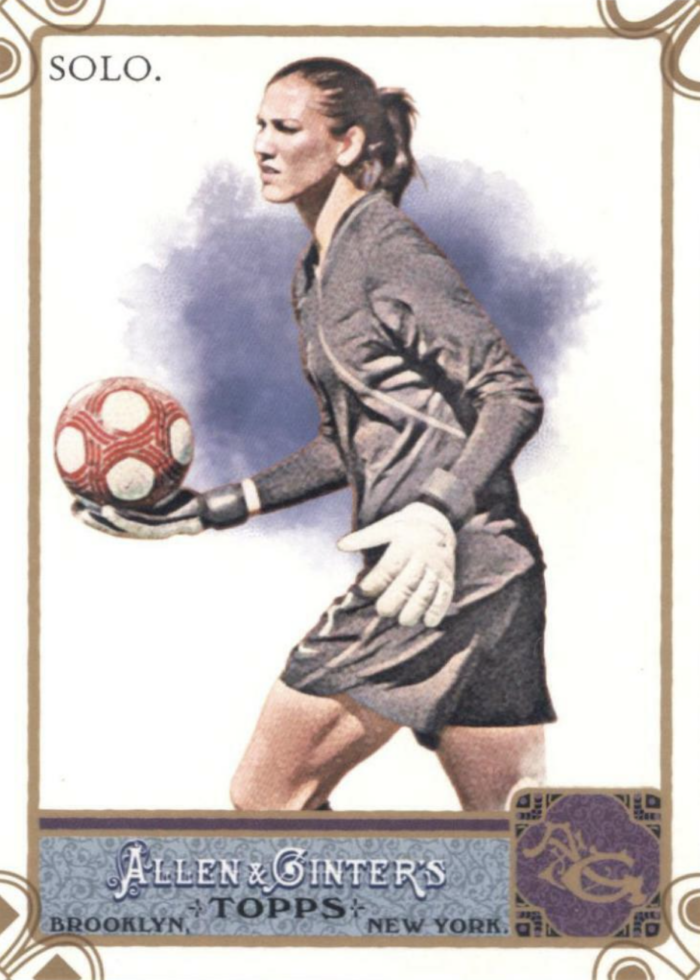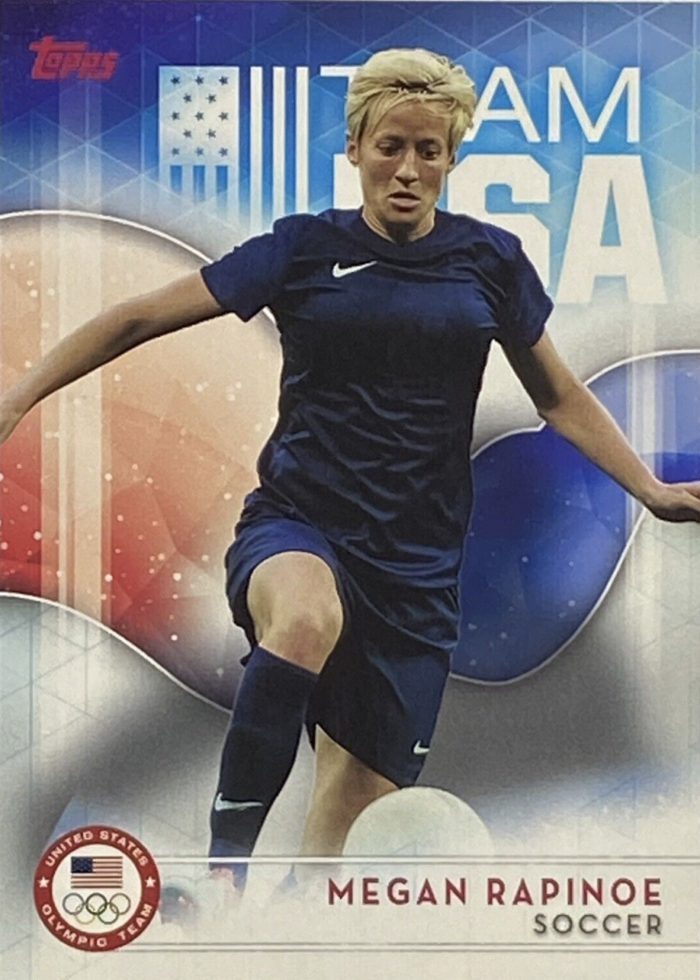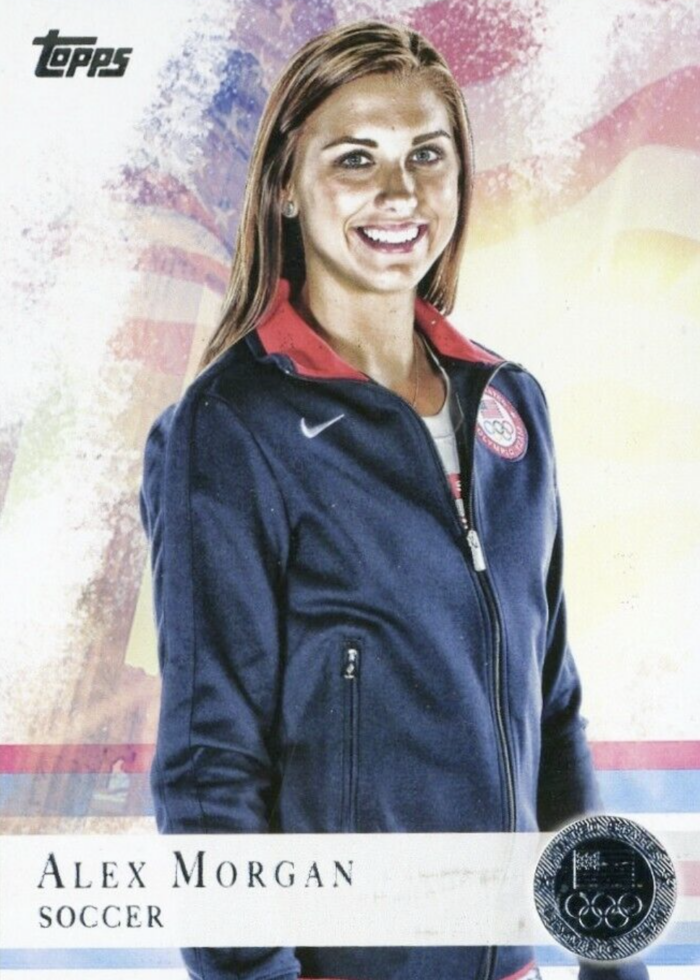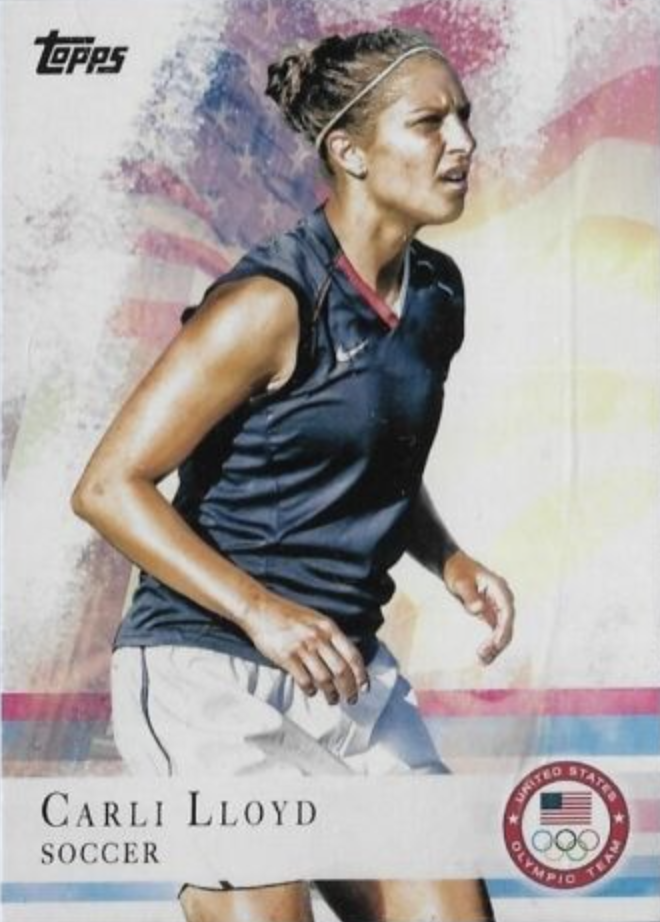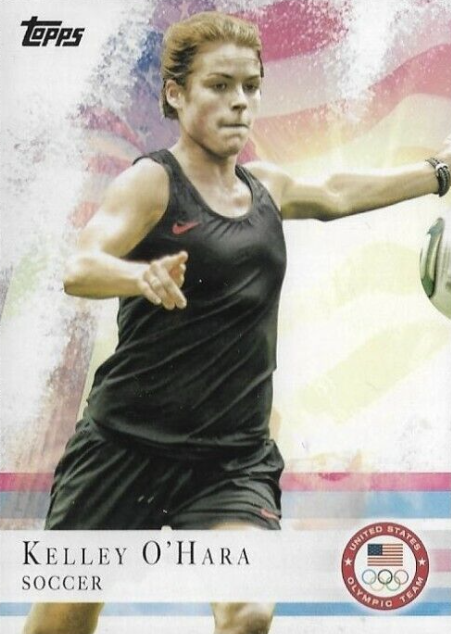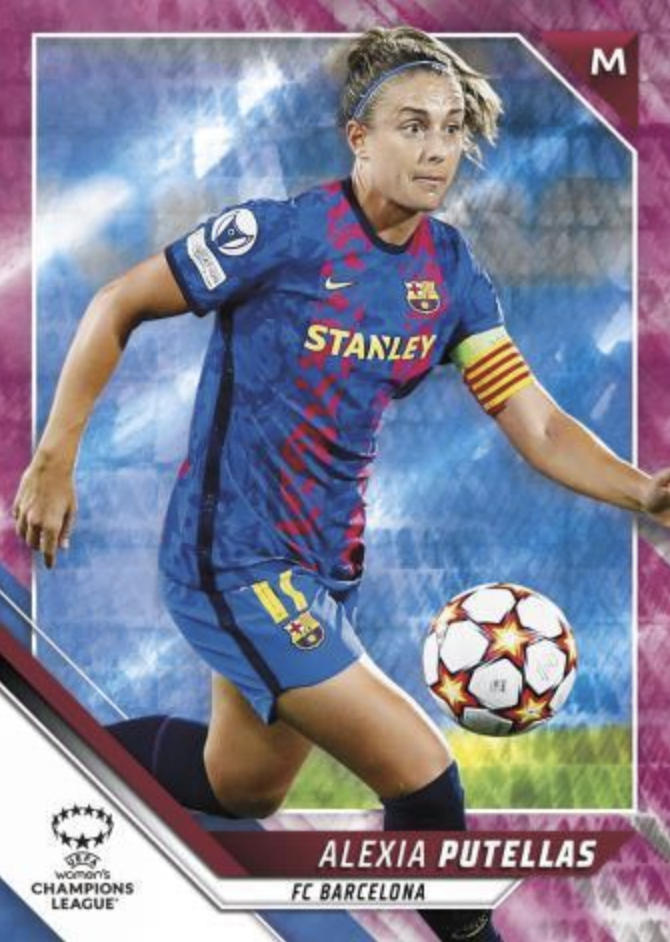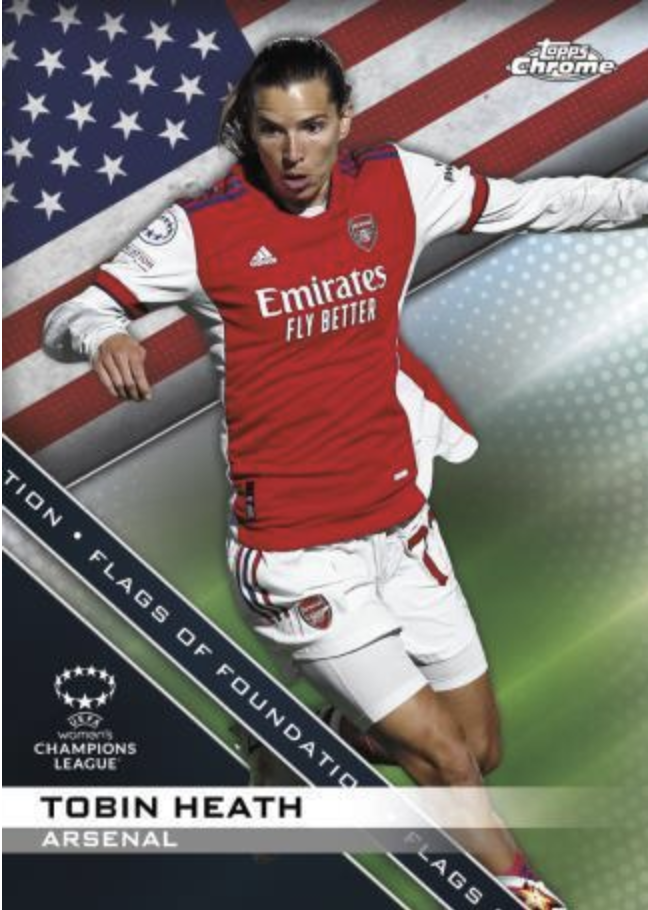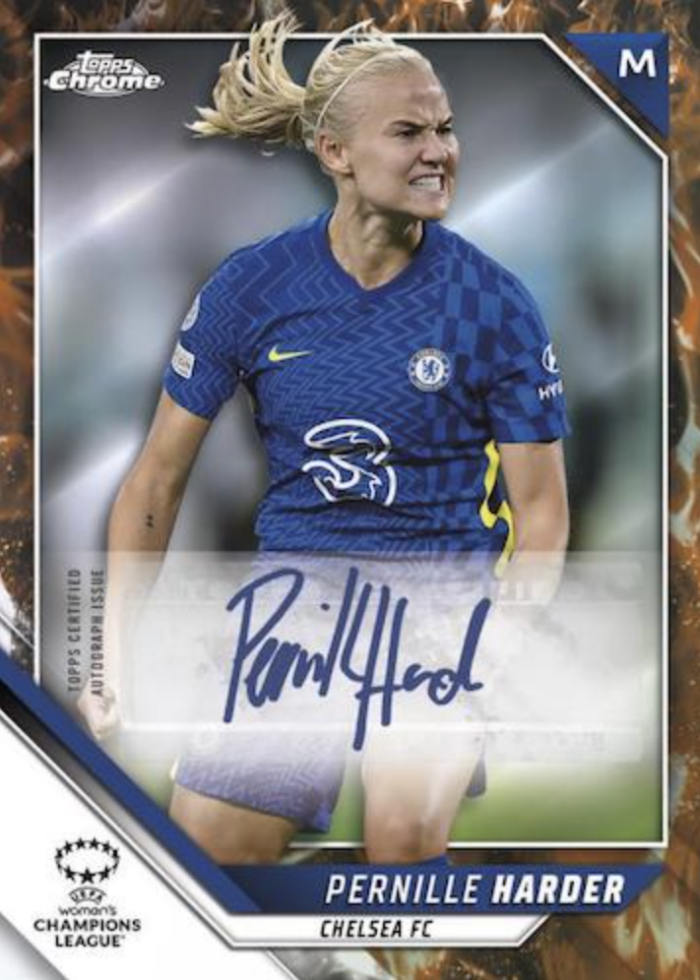
Women’s Soccer and the Hobby
With one swift swing of his powerful right leg, Portugal’s Cristiano Ronaldo rocketed the ball into the upper left corner of the net and sent news outlets and soccer fans into a frenzy. In Portugal’s opening game of the 2022 World Cup in Qatar, the captivating forward scored to give himself a goal in five different World Cups, a remarkable achievement for a legendary player.
On social media, many credited Ronaldo as the first to do so. And he was indeed the first man to do so. But two women — Brazilian forward Marta and Canadian forward Christine Sinclair — accomplished the same feat many years earlier. Furthermore, Marta and Sinclair are playing in the 2023 Women’s World Cup in Australia and New Zealand — if either of them finds the net, they will make it six World Cups with a goal.
Though the game has rarely received the respect it deserves, women’s soccer has its fair share of stars; slowly but surely, they’re beginning to get their due. With the World Cup in full swing, dive into the history of women’s soccer and see which cards you should have your eye on.
The Early History
Though most of today’s top leagues haven’t existed for more than a few decades (if that), women have been playing soccer for hundreds of years, just like men.
One of the oldest women’s soccer teams on record is the British Ladies’ Football Club, founded in part by team captain Nettie Honeyball (a pseudonym, real name unknown) in 1895. BLFC’s president, Lady Florence Dixie, was a fierce advocate for women’s athletics. “There is no reason why football should not be played by women and played well, too,” she once said.
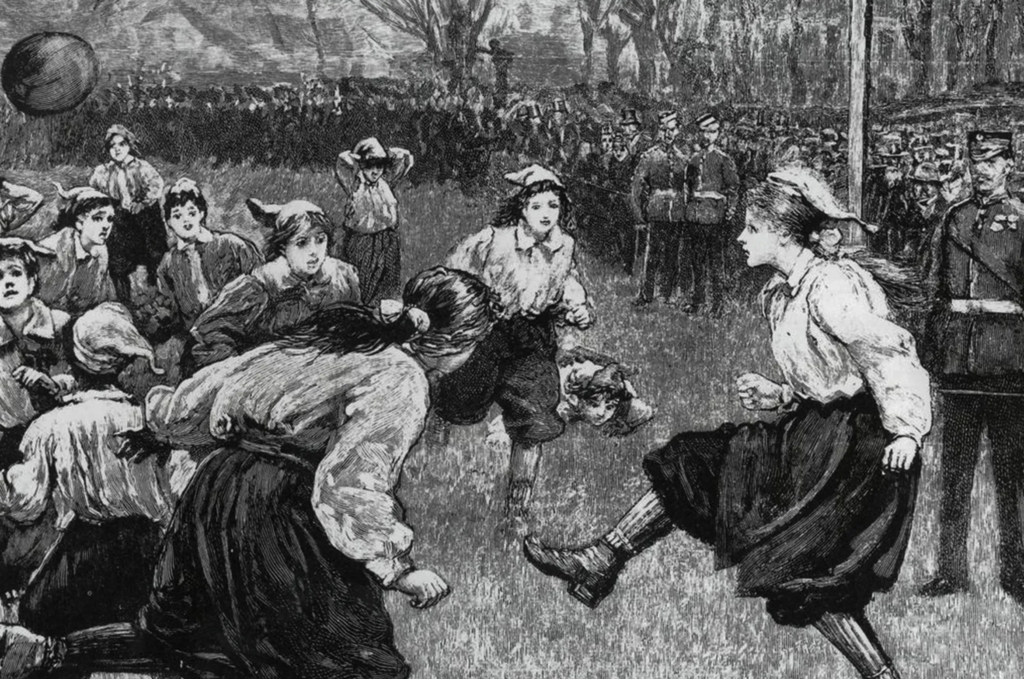
Archival magazine illustration of the first official international women’s soccer match in 1895.
Though the BLFC was perhaps the best-known, there were reportedly other women’s clubs in existence around the same time, both elsewhere in Great Britain and also in Canada. The women’s game enjoyed a great deal of success for the first few decades of the 20th century, but its progress came to a screeching halt in 1921 when The Football Association, the governing body of the sport in England, banned women from playing altogether.
The reasons for the ban have long been debated; Alice Barlow, who played for a team of World War I munitions workers called the Dick, Kerr Ladies F.C., later said in an interview that she chalked it up to jealousy.
“We were more popular than the men, and our bigger gates were for charity,” Barlow recalled. In the ensuing years, other countries — notably Germany, France, and Brazil — followed suit with bans on women’s soccer. The measures remained in place for decades.
Though the United States did not enact a similar ban, America wasn’t fertile ground for women’s athletics. Very little is known about the history of women’s soccer in the U.S. There are references to early leagues, like meeting notes from the U.S. Soccer Federation in 1919 that alluded to a women’s league in Bridgeport, Connecticut. Still, so much has been lost to history.
One of the earliest American women’s leagues with extensive documentation is the Craig Club Girls Soccer League, informally referred to as the Craig League. It was started by a Catholic priest in 1951 in soccer-obsessed St. Louis, and it consisted of about 70 girls between the ages of 16 and 22, spread across four teams. Games occasionally took place at Sportsman’s Park, which also served as the home of the MLB’s St. Louis Cardinals. The league lasted only two seasons, but its legacy remains today.
We Want the Cup
The first World Cup featuring men’s teams occurred in 1930 but arrived without a women’s equivalent. Over the years, interest steadily grew in the global game — but of course, all the while, women had been banned from playing it in an organized fashion. The football associations of England, France, and Germany finally lifted their bans on women’s soccer in 1970; that same year, the first informal Women’s World Cup was held in Italy.
A governing body organized the 1970 Women’s World Cup called the Federation of Independent European Female Football (FIEFF). Because it wasn’t affiliated with FIFA, you won’t see it when you look up the list of champions. The tournament, which consisted of eight teams (all from Europe except Mexico), was played in Italy and won by Denmark. The FIEFF hosted another Women’s World Cup in 1971, and Denmark defended its title in Mexico in front of a reported crowd of more than 100,000 people.
A few other women’s soccer tournaments took place in the 1980s. Still, FIFA effectively disregarded the entire sport of women’s soccer until the late 1980s, when it held the FIFA Women’s Invitation Tournament in China. The first FIFA-official Women’s World Cup followed in 1991 and has occurred every four years since.
Today, women’s soccer leagues exist worldwide; two of the strongest are America’s National Women’s Soccer League (NWSL) and England’s Women’s Super League. Just as UEFA, the governing body of soccer in Europe, hosts the men’s Champions League for the best teams from each member country, a women’s equivalent has existed since 2001.
30 Years of Women’s Soccer Cards
Right around the time of the first Women’s World Cup, we started to see some of the earliest women’s soccer cards. But popular cardmakers didn’t sell them, and they weren’t the main draw of the thing being sold. They were sheets of perforated cards that appeared inside issues of Sports Illustrated Kids, the family-friendly version of the iconic athletic magazine. In addition to featuring players from classic trading-card sports like baseball, basketball, and football, SI Kids also showcased athletes that played sports without traditional trading card products like swimming, cycling, and tennis.


Mia Hamm, who starred on the U.S. Women’s National Team from 1987 to 2004, was featured on one such card. A PSA 10 copy of her 1992 SI Kids rookie card sold for over $30,000 in the summer of 2021. At that time, it was the most expensive women’s sports card ever purchased. (It’s since been overtaken by a handful of cards featuring tennis icon Serena Williams.)
Eventually, women’s soccer cards started appearing in packs, but not their own — they began as inserts in products featuring the MLS. One of the most popular women’s soccer chases today, Alex Morgan’s 2011 Upper Deck rookie card, came to the hobby that way.

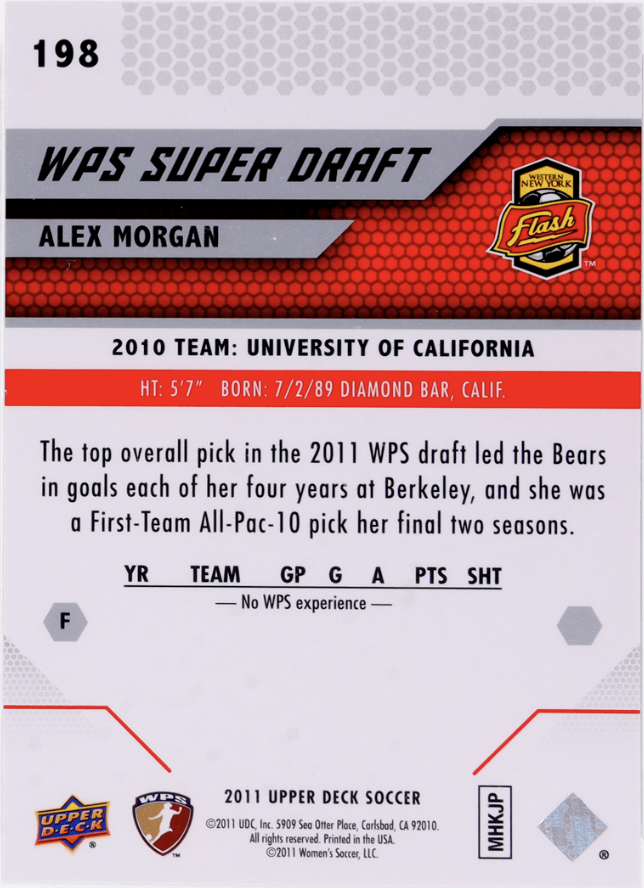
Around that same time, Topps entered the women’s soccer game. Similarly to Upper Deck’s dip into USWNT cards, Topps’ early women’s cards appeared in Allen & Ginter packs, an old-school product that heavily (but not exclusively) featured baseball players. One notable USWNT card from 2011 Allen & Ginter is that of former USWNT goalie Hope Solo; a few of the other female athletes featured in the set include ice skater Kristi Yamaguchi and golfer Annika Sorenstam. It was a similar story in 2016. To celebrate the upcoming Olympic Games in Rio de Janeiro, Topps made a set that featured all of the top athletes across Team USA, a few of whom were women’s soccer players (like Megan Rapinoe, who’s ending an illustrious career this year).
It wasn’t until 2020 that a card brand released a product that was strictly women’s soccer. That distinction belongs to Parkside Collectibles, a small card company based in Los Angeles that signed a licensing agreement with the NWSL for a card set promoting the NWSL Challenger Cup. “No one had ever attempted anything to the scale or with the singular focus that Parkside did,” wrote Bekki Morgan, who contributes to the women’s soccer website The Equalizer. Parkside continues to be the exclusive provider of NWSL cards today.
Meanwhile, Topps’ chromium set featuring the biggest stars from the 2021-22 UEFA Women’s Champions League was the first of its kind. With the Women’s World Cup approaching the knockout stages, the set is returning for its second season — and it has big shoes to fill.
2021/22 Topps Chrome UEFA Women’s Champions League
“Last year’s set was probably our best-received product of the season (for men’s or women’s soccer),” said Dillon Stambaugh, the brand director for soccer at Topps. “It was a huge hit and something we’re looking to build on going forward.”
The set includes a number of the players currently shining at the World Cup, like Barcelona’s Alexia Putellas (whose Chrome UCL auto is featured for the first time this year) and Chelsea’s Sam Kerr. There’s also Kerr’s Chelsea teammate, midfielder Catarina Macario — a rising star for America who’s missing the World Cup to recover from an ACL injury. From the USWNT, there’s co-captain Lindsey Horan, who plays her club soccer for Lyon in France.
What’s Next?
The excitement around women’s soccer seems to grow with each passing day. You can see it in the attendance figures at women’s games — last year’s edition of “El Clasico” between Real Madrid and Barcelona set an attendance record for a women’s game with over 90,000 spectators at Camp Nou. Ticket sales for the World Cup are outpacing FIFA’s expectations, with over 1.6 million tickets sold.
And around the globe, interest continues to strengthen for women’s cards, too. Stambaugh recently attended a card show in London, where he noticed a few tables dedicated explicitly to buying and selling women’s soccer cards. He saw the same passion last month at the National, the largest event of the year for collectors.
“People collecting women’s soccer were all over the place, and it was really exciting to see,” he said. “We think the sky’s the limit.”
